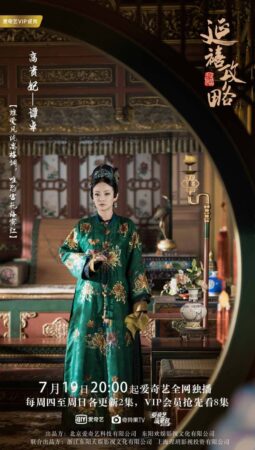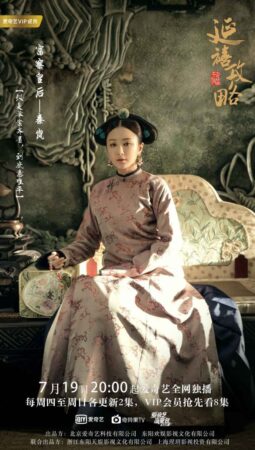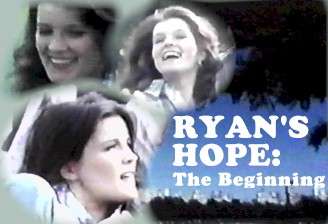The Black Lives Matter Protest invigorated many of us to think about our respective curricula. I was probably not the only one aware of the limitations of what I offered to students in terms of including non-dominant voices. Most of my teaching has focused on British, American and sometimes European television and film. There is no question that this is also what most of our students knew and often wanted, so my teaching existed in a larger Eurocentric bubble that my students were certainly part of. Being interested in transnational television, I did refer to the success of Latin American telenovelas and South Korean drama, but I never really ventured beyond that. But this year I challenged myself: and what a revelation it’s been.
Several commentators have highlighted the problems of the 2014 changes to the history curriculum in British schools (Mansfield, 2019; Alexander and Weekes-Bernard, 2016), particularly in relation to the glorification of a particular narrative and the exclusion of minority voices. This became very apparent also in my teaching which showed that most of my students knew little about other countries or indeed the United Kingdom’s often problematic, violent or complex relation to them. Several of them ended up thanking me for including these lessons which they felt enriched their understanding of their relationship to the world. It also enabled them to give labels to often ‘icky’ feelings regarding film and television content that they experienced as problematic but could not quite put their finger on why.
It also led to moments of real joy when I realised the value that teaching Nollywood gives to black British students who revelled in not having another ‘black trauma story’, as they called it, told to them. Nollywood also made us realise that big budget isn’t everything: it’s story and emotional resonance that matters rather than yet more convincing visual effects.
But the biggest revelation was how the meeting of different cultures made visible the limitations of our own: if black British students enjoyed not seeing another trauma story, then I enjoyed not seeing another woman-in-romance story. It is this aspect that I want to explore a bit further today, by looking at one of the set texts for one of my third-year modules: the incredibly successful, but probably not massively widely known amongst us television scholars in the Global North, Story of Yanxi Palace (2018).
The programme is a joint commission for the Chinese streaming service iQIYI and the regional broadcaster Zhejiang TV. Chinese television is extremely fragmented with many broadcasters that cater to specific regions (see Zhu et al, 2008). These broadcasters are nevertheless often state-controlled. Zhejiang TV caters for the province of the same name around the city of Hangzhou, south-west of Shanghai. iQIYI is one of the world’s largest streaming services (Cassidy, 2015) which also collaborates with several US companies including Paramount and Netflix. The latter is itself not available in China. The programme had over 15.8 billion streams. Compare that to the extremely successful Bridgerton (Netflix, 2021) which attracted 82 million streams and you get a sense of its scale.
But more impressive than its outstanding success (and the fact that most of us still haven’t heard of it) is its story world. It is utterly sumptuous. If you don’t want to watch any of the narrative, watch the title sequence alone:
https://youtube.com/watch?v=tr_R9s7gMgk&list=PLStMKLDGm15dQJwTuraTJbqaVvu96Uujl
Set in the relatively early days of Qianlong’s reign (1735-1796), the drama is focused on the women, the empress, the consorts and the many female attendants of the Forbidden City. Like many telenovelas – one of the most successful of which, Isaura: Slave Girl (Rede Globo, 1976) apparently impacted on the development of the specific Chinese cultural form of television drama (Zhu et al, 2008) – Story of Yanxi Palace tells one central narrative in over 70 episodes, but also offers plenty of time to develop sub-plots and other characters. What emerges is a complex picture of a deeply troubled society where no one is able to trust anyone, but where no one is also fully trustworthy. Crucially, most of the drama is focused on the women’s dealing with each other, whilst male characters remain relatively secondary. Thus, the narrative itself has space and time to develop a complex picture of society within the Chinese imperial court at a particular time, making it luxurious in terms of narrative development and plot twists. However, it is also the production values that make this drama sumptuous: clearly, a lot of money has gone into research and into set and production design, making this a real feast for the eye as these publicity stills alone testify.
What strikes me about these publicity stills is their visual closeness to the photography of John Thomson (1837-1912), a Scottish photographer whose images of China continue to be exhibited in the UK and beyond and whose work has been the subject of a wonderful talk at SOAS which you can watch here:
As Michael Wood highlights in this talk, John Thomson was perceived to have gone ‘native’ as it was derogatively called at that time, indicating that instead of remaining within the colonialist framework with which he initially approached his subjects, he developed a style focused on empathy and recognition of our shared humanity. This stylistic nod, although anachronistic, means that the programme seems marked by an interesting outside-inside position: aware that it is looking into a world that we do not inhabit ourselves, but one that we can nevertheless recognise and empathise with, creating, as David Levente Palatinus has suggested (personal communication, 2021) ‘an intimacy immanent in extimacy’.
Period drama set within the harems of rich men is a well-established trope in Chinese culture, known to many of us in the Global North as a result of the work of the Fifth Generation film makers, not least Zhang Yimou whose Raise the Red Lantern (1991) won the Silver Lion at the Venice Film Festival. It is also the subject of a key novel of Chinese classic literature, namely The Dream of the Red Chamber (Cao Xueqin, mid-18th century), which was also made into a successful TV series in 1987 (CCTV). These films and dramas also often focus on women, but remain surprisingly unusual for Chinese period drama which is more often focused on emperors and other authoritative male figures (Zhong, 2010). As Zhong highlights, this gives these dramas the opportunity to explore complex political issues, often with the effect of legitimising the changing power dynamics of the Chinese state.
I would not be able to comment on how Story of Yanxi Palace questions or negotiates the current power dynamics of the Chinese state, but it seems to me that by focusing on the women of the harem, the programme might easily be shown to have a similar problematic dynamic as, perhaps, Zhang’s Hero (2002) which has been rightly criticised for its willingness to embrace authoritarianism (Kaldis, 2009). However, what strikes me much more is how the programme draws on Confucian and Buddhist ethics in order to ask fundamental questions about how power can be tackled when the people fighting for power are fundamentally powerless. And it is here, that my feminist heart is quickening.
Confucian ethics are significantly more ambiguous than Christian ones. There are guidelines and principles, many of which are about respect for one’s elders and honouring tradition, but, sitting between applied and theoretical ethics, they are often based around (often homogenising) notions of human nature which is recognised as deeply flawed (Cline, 2017). Similarly, Buddhist ethics emphasise that an action itself cannot be classed as good or bad, but needs to be recognised in relation to the consequences it has, which points to a more descriptive and less prescriptive form of ethical understanding. Buddhism and Confucianism remain central reference points throughout Story of Yanxi Palace which shows us the women of the harem scheming and working against and for each other. This leaves none of the characters untouched: those that appear as morally perfect, as indicated by their strict adherence to Buddhist philosophy, murder other women while those that are clearly power hungry and morally corrupt, as evidenced by their disputes with their families, turn out not quite as bad as we thought (see also Mao et al, 2021).
None of them have any real power – that is yielded by the emperor and his senior ministers. Thus, the power struggles that we get to observe are struggles for favour, for the scraps off the table of men. This can of course hardly be understood as feminist. However, it represents women’s experiences in patriarchal cultures rather well (Zhou, 2019). Importantly, however, men are never the desired object: rather it is power and the relations with the other women. It is that focus that makes Story of Yanxi Palace so refreshing – even though I recognise some of the themes from Dynasty (ABC, 1981-1989) which became legendary for its cat fights between Krystle (Linda Evans) and Alexis (Joan Collins).
Here too, the relationship between the women became more important than the central relationship that started it all off: Krystle and her husband. But Dynasty nevertheless had a tendency to focus on love and women falling in and out of it. While there are also love stories within Story of Yanxi Palace, they are clearly secondary to the other relationships. Thus, what we are getting are morally extremely ambiguous women who are not defined by their wish to be desired by a man.
Of course, we find lots of women like this also in other TV drama: think Prime Suspect (ITV, 1991-2006) and a lot of other crime drama. But in the high-end melodramatic mode (think Sex and the City, HBO, 1998-2004 with its focus on Mr Big; Bridgerton and the like) which this essentially is, such representation remains very rare. And this is made even more evident by the sequel, Yanxi Palace: Princess Adventures (Netflix, 2019) which focuses on one of the daughters of the harem who is meant to marry one man, then falls in love with another while battling the intrigues of one of the other harem ladies.
What these musings highlight to me are two things: first, how thirsty I am for stories about morally ambiguous women who are not defined by their potentially romantic relationship with a man. And second, as I have written before, that the development of high-end TV drama in the USA has not been something that has massively benefitted women in terms of representation or otherwise. If American television drama has been connected to a masculinisation of television as I argued then in relation to the British press discourses, then it has also increased narratives which imagine women within the limits of traditional femininity – as classic Disney princesses, largely. Interestingly, this is how Story of Yanxi Palace is sold to some audiences (as a Cinderella story) – though the narrative couldn’t be any more different. The decolonising of the curriculum, then, makes visible the availability of alternative narratives about women and the incredible limits of our own at the ‘high end’ spectrum of production. Decolonisation, then, emphasises again that our struggles are not against each other, but operate in relation to each other, intersecting, mutually supporting and mutually beneficial.
Elke Weissmann is Reader in Film and Television at Edge Hill University. She is currently considering changing this to Reader in Television and Film, however. Her books include Transnational Television Drama (Palgrave) and the edited collection Renewing Feminisms (I.B.Tauris) with Helen Thornham. She sits on the board of editors for Critical Studies in Television. She migrated to the UK in 2002 after realising that German television was as bad as she remembered.
Acknowledgement
With my usual thanks to David L. Palatinus who as always offered his own insights in the development of the blog and suggested some further reading.
References
Alexander, Claire, and Debbie Weekes-Bernard. 2017. ‘History Lessons: Inequality, Diversity and the National Curriculum’. Race Ethnicity and Education 20 (4): 478–94. https://doi.org/10.1080/13613324.2017.1294571.
BBC News. 2018. ‘Yanxi Palace: The Most Googled Show on Earth’, 23 December 2018, sec. China. https://bbc.com/news/world-asia-china-46630781.
———. 2021. ‘Bridgerton: Netflix Says Drama Is Its Biggest Series Ever’, 28 January 2021, sec. Entertainment & Arts. https://bbc.com/news/entertainment-arts-55837969.
Cassidy, Kevin. 2015. ‘Lionsgate Pacts With Chinese Online Giant IQIYI’. The Hollywood Reporter (blog). 9 October 2015. https://hollywoodreporter.com/news/general-news/lionsgate-pacts-chinese-online-giant-831031/.
Cline, Erin M. 2017. ‘Putting Confucian Ethics to the Test: The Role of Empirical Inquiry in Comparative Ethics’. Journal of Religious Ethics 45 (4): 666–86. https://doi.org/10.1111/jore.12196.
Kaldis, Nick. 2009. ‘A Brief Response to Wendy Larson’s “Zhang Yimou’s Hero: Dismantling the Myth of Cultural Power”’. Journal of Chinese Cinemas 3 (1): 83–88. https://doi.org/10.1386/jcc.3.1.83_7.
Mansfield, Andrew. 2019. ‘Confusion, Contradiction and Exclusion: The Promotion of British Values in the Teaching of History in Schools’. The Curriculum Journal 30 (1): 40–50. https://doi.org/10.1080/09585176.2018.1533483.
Mao, Han, Jingru Liu, and Zihan Qu. 2021. ‘Chinese Traditional Aesthetics in Qing Palace Drama*-Take “Story of Yanxi Palace” as an Example’. E3S Web of Conferences 236: 05082. https://doi.org/10.1051/e3sconf/202123605082.
Weissmann, Elke. 2012. Transnational Television Drama: Special Relations and Mutual Influence between the US and UK. Houndmills, Basingstoke, Hampshire ; New York: Palgrave Macmillan.
Yun, Zhou. 2019. ‘THE STORY OF YANXI PALACE’. In Power, edited by Jane Golley, Linda Jaivin, Paul J. Farrelly, and Sharon Strange, 149–52. ANU Press. https://jstor.org/stable/j.ctvfrxqkv.18.
Zhong, Xueping. 2019. Mainstream Culture Refocused: Television Drama, Society, and the Production of Meaning in Reform-Era China. University of Hawaii Press. https://resolver.ebscohost.com/Redirect/PRL?EPPackageLocationID=1118986.1159972.45286747&epcustomerid=s2947694.
Zhu, Ying, Michael Keane, and Ruoyun Bai, eds. 2008. TV Drama in China. TransAsia: Screen Cultures. Hong Kong: Hong Kong University Press.







